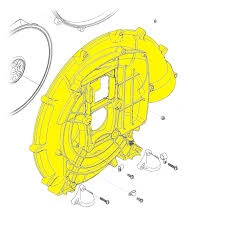Mobile:+86-311-808-126-83
Email:info@ydcastings.com
ball valve casting
Understanding Ball Valve Casting A Key Process in Valve Manufacturing
Ball valves are essential components in various industrial applications, known for their reliable performance and durability. One of the crucial aspects of their production is the casting process, which shapes the raw materials into the desired valve form. This article explores the intricacies of ball valve casting, its techniques, and its significance in manufacturing high-quality valves.
The Importance of Casting in Valve Production
Casting is a manufacturing process where liquid metal is poured into a mold and allowed to solidify, creating a specific shape. This process is particularly vital in the production of ball valves, which require precise dimensions and surface finishes to function optimally. The quality of the casting directly affects the performance, longevity, and reliability of the valve, making it a critical step in the overall manufacturing process.
Methods of Ball Valve Casting
There are several methods used for casting ball valves, each with unique advantages and applications
1. Sand Casting This traditional method involves creating a mold from sand, which is then filled with molten metal. Sand casting is versatile and cost-effective, making it suitable for small to medium scale production. It allows for complex shapes and is commonly used for larger valves.
2. Investment Casting Also known as lost-wax casting, this method involves creating a wax model of the valve, which is then coated in a ceramic shell. Once the shell is hardened, the wax is melted away, leaving a mold for the molten metal. Investment casting is known for its high precision and excellent surface finish, making it ideal for smaller, intricate valves.
ball valve casting

3. Die Casting In die casting, molten metal is injected into a mold under high pressure. This method is suitable for high-volume production and can produce parts with extremely tight tolerances. However, it is typically used for non-ferrous metals like aluminum and zinc, limiting its application for some ball valves.
4. Centrifugal Casting This technique involves pouring molten metal into a rotating mold. The centrifugal force ensures an even distribution of the metal, resulting in a denser, stronger final product. This method is often used for manufacturing larger components such as valve bodies.
Material Selection for Ball Valve Casting
The choice of materials for casting ball valves is equally critical. Commonly used metals include cast iron, stainless steel, and bronze, each offering unique properties. Stainless steel, for example, provides excellent corrosion resistance, making it ideal for valves in challenging environments. Cast iron, on the other hand, is cost-effective and suitable for a range of applications.
Quality Control Measures
Quality control is paramount in the casting process to ensure the integrity and performance of the ball valves. Each stage – from mold preparation to post-casting inspections – is carefully monitored. Non-destructive testing methods, such as ultrasonic and radiographic inspections, are utilized to detect any internal defects. Moreover, dimensional checks ensure that the final product meets the required specifications.
Conclusion
Ball valve casting is a vital process in the manufacturing of efficient and reliable valves used across various industries, including oil and gas, water treatment, and chemical processing. Understanding the different casting methods, material selection, and quality control measures can greatly enhance the production process, leading to superior valve performance and longevity. As technology continues to evolve, innovations in casting techniques will likely improve efficiency, reduce costs, and further enhance the quality of ball valves in the future.
-
Understanding Metal Casting TechniquesNewsApr.02,2025
-
Understanding Exhaust Manifolds for Enhanced Engine PerformanceNewsApr.02,2025
-
The World of Metal FabricationNewsApr.02,2025
-
Key Components for Pump and Turbo EfficiencyNewsApr.02,2025
-
Essential Tools for Automotive Maintenance and RepairNewsApr.02,2025
-
Durable Valve Components for Effective Water ManagementNewsApr.02,2025











